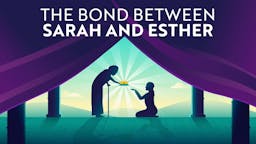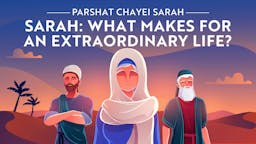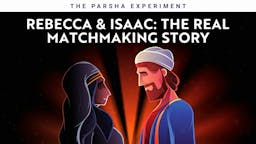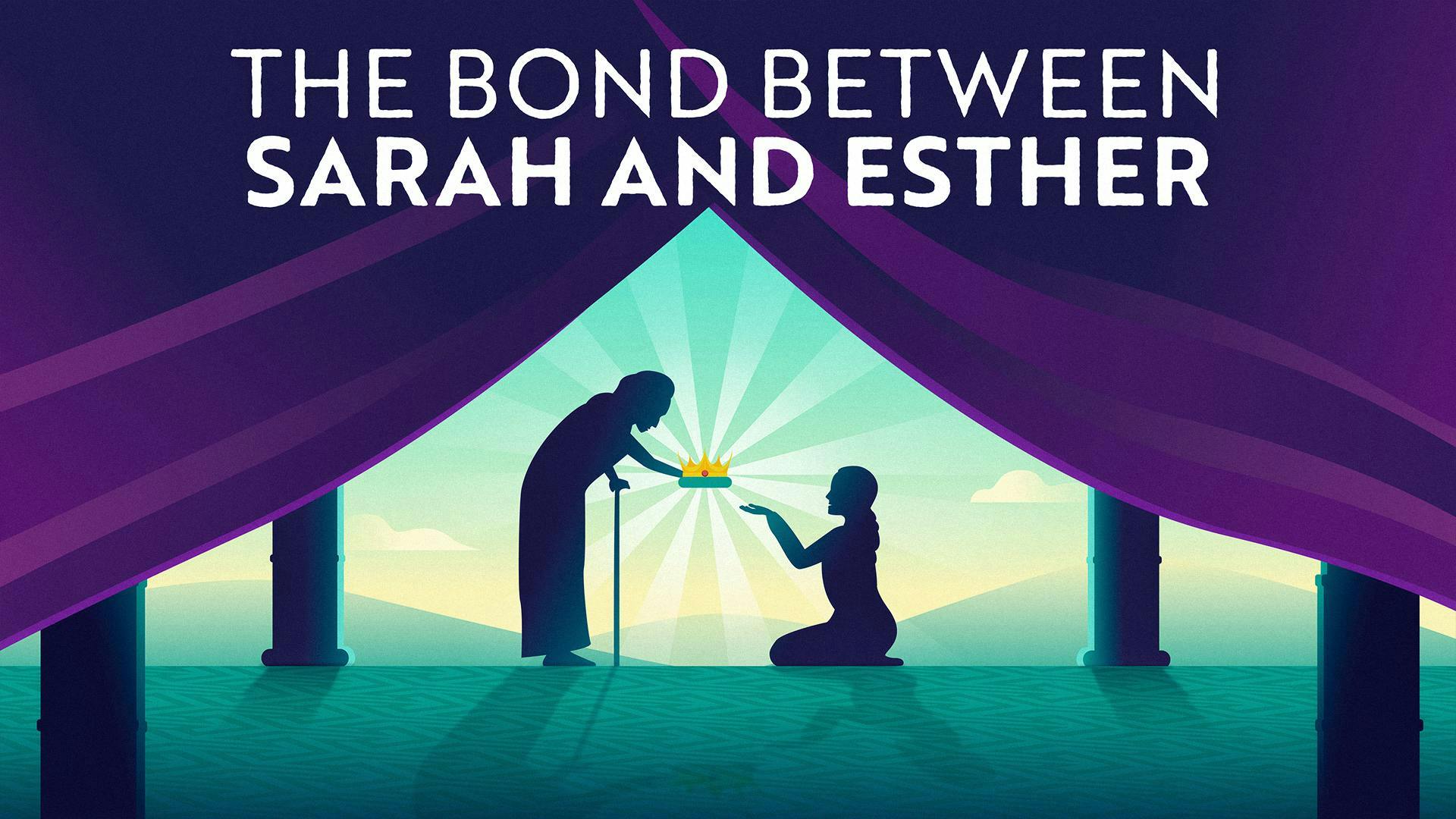D’var Torah on Parshat Chayei Sarah
The Mysterious Connection Between Sarah and Queen Esther
By Evan Weiner | 15 April 2024 | 3 Minute Read
A Rabbinic Riddle
The Midrash tells a story about the famous sage, Rabbi Akiva. He once saw his students dozing off in class. As the story goes, Rabbi Akiva attempted to reenergize his students with a riddle, a question he posed about the opening verse of Parshat Chayei Sarah. The verse talks about the number of years that our matriarch, Sarah, lived. We are told she was 127 years old, and Rabbi Akiva challenged his students with this query:
מָה רָאֲתָה אֶסְתֵּר שֶׁתִּמְלֹךְ עַל שֶׁבַע וְעֶשְׂרִים וּמֵאָה מְדִינָה
Why was it exactly that Esther ended up ruling over 127 provinces?
Rabbi Akiva paused for a moment to let his students ponder this question, then he gave an answer:
אֶלָּא תָּבוֹא אֶסְתֵּר שֶׁהָיְתָה בַּת בִּתָּהּ שֶׁל שָׂרָה שֶׁחָיְתָה מֵאָה וְעֶשְׂרִים וָשֶׁבַע וְתִמְלֹךְ עַל מֵאָה וְעֶשְׂרִים וְשֶׁבַע מְדִינוֹת
It came about because Esther was a descendant of Sarah, and Sarah lived to 127; [therefore] let Esther come and rule over 127 provinces.
(Bereishit Rabbah 58:3)
What is going on in this riddle? At face value, Rabbi Akiva makes this strange – almost humorous – logical leap. The opening verse of Parshat Chayei Sarah tells us that Sarah died at the age of 127, so yes, it corresponds to the number of provinces ruled over by Esther, but that’s sort of an intriguing coincidence…maybe. But does Queen Esther, this heroine of the Purim saga, have anything really to do with Sarah, Abraham’s wife?
When you read this Midrash, you have to wonder, was Rabbi Akiva just joking here – was this really a harmless little stunt to wake his sleepy students? Or did Rabbi Akiva’s attempt to wake up his students conceal a hidden meaning that his students, and we, might actually be able to glean from it?
Connecting Sarah to Esther
To begin to see what Rabbi Akiva might have been getting at, let’s start with this question: Did Sarah and Esther truly have anything fundamental in common with one another?
At face value, not so much. They are both notable figures of the Bible. They’re both women. But, a lot of other women are also notable in the Bible: Miriam, Devorah, Yael, Ruth, to name just a few. And yet, in Rabbi Akiva’s mind, there was actually something particular about Sarah and Esther that seems to have bound them together. Their respective 'one hundred and twenty-sevens were somehow aligned with one another. What was that quality that bound these women together?
Come with me to this video to see the connection between these two great heroines and discover Sarah’s majesty.
Parshat Chayei Sarah in a Nutshell
Parshat Chayei Sarah gets its name from the opening verse that tells how old Sarah was when she died: 127. The first part of the parsha tells the story of Abraham’s negotiations for a burial plot for his wife, and his eventual purchase of Ma’arat Hamachpelah (the “doubled” caved). Abraham, realizing that he will not live for eternity, dispatches his trusted servant, Eliezer, to find a wife for Yitzchak. Eliezer then travels back to Abraham’s homeland to find a match for Yitzchak. He devises a test to see which young lady would be a suitable match. When Rivka (Rebecca) demonstrates her kindness in offering water to Eliezer and his camels, Eliezer knows that she is the one for Yitzchak. The narrative about the test to find a match for Yitzchak is repeated, almost word for word, as Eliezer meets with Rivka’s family, and afterwards Rivka and her family agree to the marriage proposal. The parsha concludes as Rivka travels back to the Land of Canaan with Eliezer, meets Yitzchak, and they establish their home together.
More Parshat Chayei Sarah Videos

The Bond Between Sarah And Esther
Video • 11 min
The Torah tells us that Sarah died when she was 127. The Torah also tells us that there were 127 provinces in the Persian empire in the days of Achashverosh and Queen Esther. Coincidence? Rabbi Akiva doesn’t think so, and neither does Rabbi Fohrman. Watch this video to find out why.

What Sarah's Character Teaches Us About Living Our Best Life
Video • 5 min
You know those one or two elderly people you know who are so amazing, you think, “I want to be like that when I’m their age”? Sarah probably would have been one of them — and this parsha tells us how she got to be that way. This is a lesson that you’re going to want to hold on to.

Eliezer And Rebecca At The Well: The Deeper Significance
Video • 9 min
The Torah seems to connect Isaac’s search for a wife and the selection of one of Israel’s first national leaders. Why? What do marriage and kingship have in common? This video offers a novel idea about what makes nations rise and fall, and what makes marriages succeed or fail.

What Made Rebecca the Right Match for Isaac?
Video • 12 min
Have you heard how Rebecca is chosen as Isaac’s wife? Well, did you know that – oddly – the Torah tells us that story twice... in a row? What, was God’s editor busy that day? Find out why the story bears repeating, what it teaches us, and whether Rebecca was the right match for Isaac.
More Printable Parshat Chayei Sarah Guides
Chayei Sarah: What Makes For An Extraordinary Life?
Printable Guide
A printable parsha guide for our Chayei Sarah video, "What Makes For An Extraordinary Life?"
Chayei Sarah: Eliezer And Samuel's Surprising Connection
Printable Guide
A printable parsha guide for our Chayei Sarah video, " Eliezer And Samuel's Surprising Connection."
More on Parshat Chayei Sarah
What is Aleph Beta?
Aleph Beta is a unique kind of Torah library. Led by our founder, Rabbi David Fohrman, we are dedicated to high-level, textual Torah learning for adults that is intellectually and spiritually sophisticated, that enlivens your Jewish practice and helps you forge a deeper connection to God. Whether you’ve been learning in yeshiva for years or you’re just beginning your Torah journey, you’re sure to find something meaningful and surprising waiting for you here.
Browse our library of over 1,000 beautifully produced animated videos, podcasts, deep dive courses, and printable guides. Topics include the weekly parsha, Jewish holidays & fast days, laws & mitzvot, prayers, relationships, big philosophical ideas and more. Have something to say at the Shabbos table that will amaze your family and guests and bring deep meaning into their lives.


